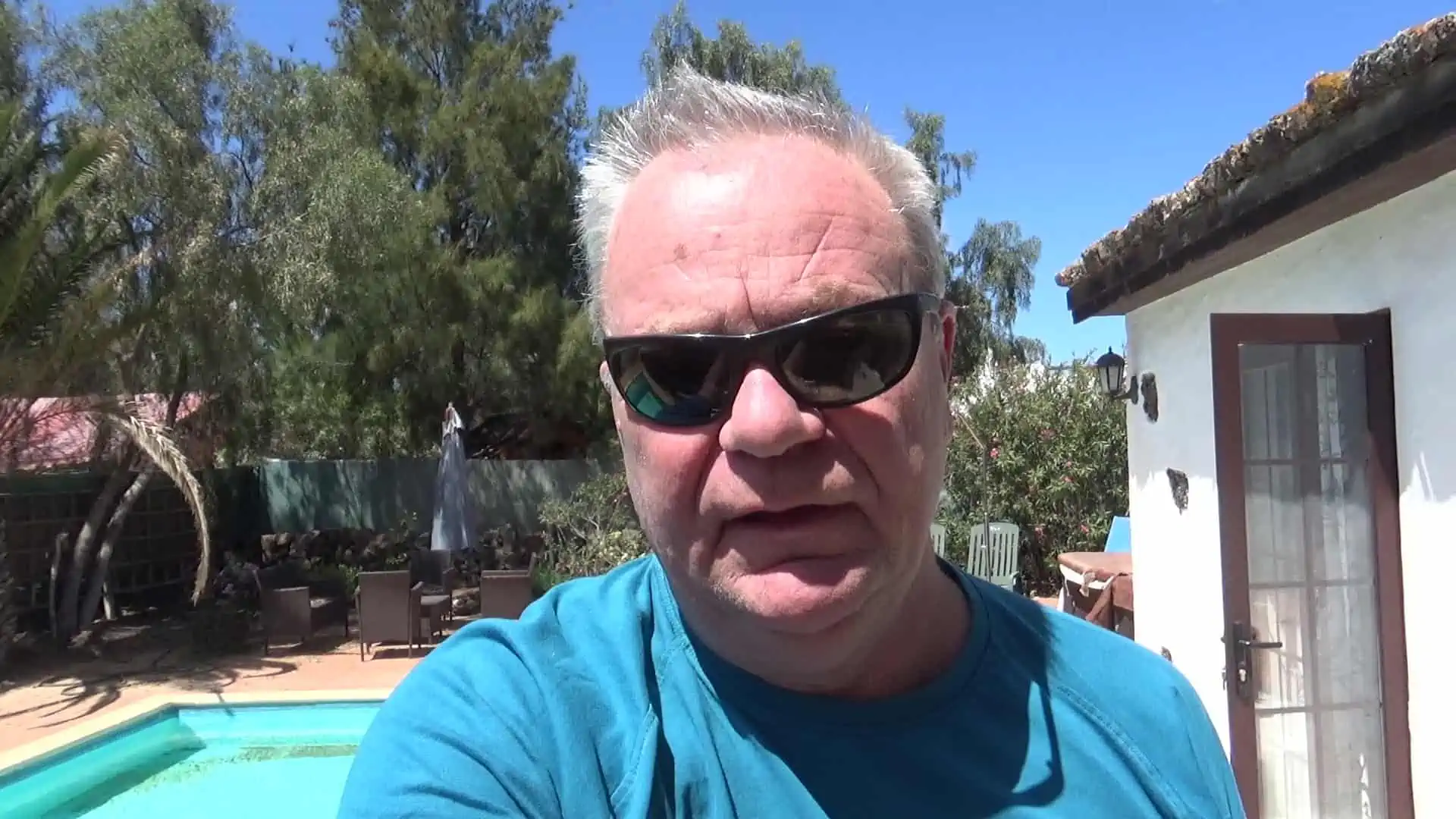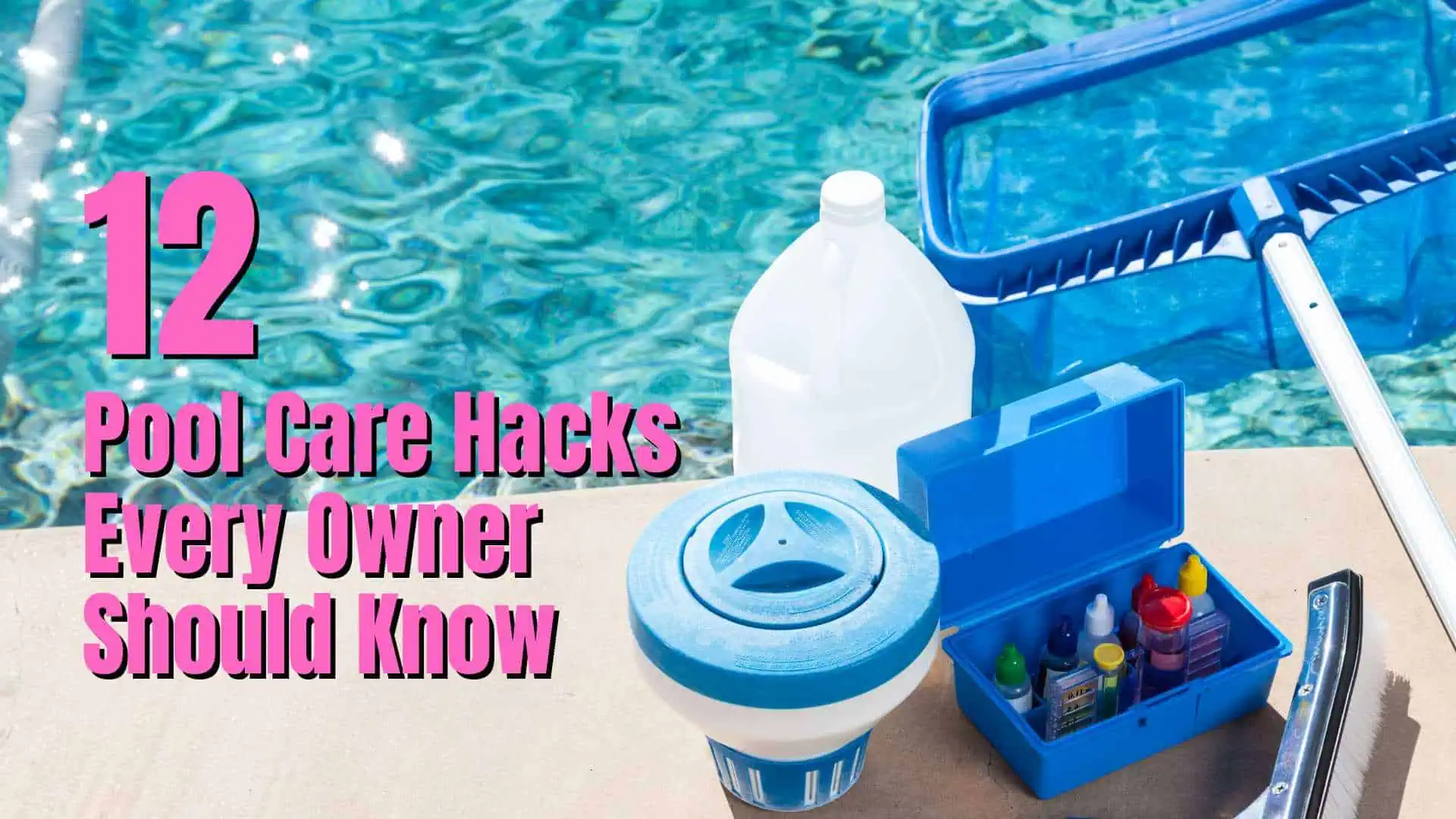Unless you live in a location where the climate is hot to mild all year round, you will need to winterize your above ground swimming pool before the colder weather kicks in to prevent it from being damaged and also to reduce the time it takes to open it again in the spring.
Our easy guide below contains all the tips and tricks you will need to complete the pool closing process and maintain your above ground pool during the cooler seasons.
Read to find out more. Let’s dive right in – not literally!


Why you need to winterize an above ground pool
Winterizing your pool is not just about protecting the water from bad weather. Failing to winterize your above ground pool during the winter season can cause more damage than you might think.
Protects against frost
Once the water drops below 40°, the chance of frost is higher than usual. Freeze damage can affect the liner, frame, pool filter and also the pipes.
Reduces algae growth
Algae and other bacteria thrive in warm, moist conditions. Pool water that is left unattended for months at a time is also prone to algae growth.
Prevents damage
Winter weather can be extremely volatile and the damage caused by one storm can often be unexpected. Winterizing an above ground pool protects equipment from damage caused by rain, ice and snow.
Keeps water clean ahead of time
We all know how hard it is to keep on top of cleaning the pool water during the summer, let alone after a long, wet and windy winter. Keeping the water clean from dirt and debris during the colder periods means less work for when the time comes to jump in!
When is the best time to winterize an above ground pool?
You should look to winterize your pool around mid-October, or when the water temperature drops below 65° and seems to stay this way.
It is a good idea to make the changes at this point as you will be less likely to use the pool as the weather becomes colder.
Be careful though, you don’t want to winterize your pool too early. If you do, the chemicals used may not be as effective by the time the frost comes around.
Similarly, winterizing your pool too late will have little to no bearing on problems such as algae that may already have grown as a result of the change in temperature.
What you will need to get started:
- Pool vacuum
- Pool brush
- Pool chemicals
- Pool cover
- Cover clips/cable and possible a winch

How to winterize above ground pool: An easy guide
Winterizing your pool isn’t rocket science and is relatively straightforward. Follow our easy guide below to get your above ground pool ready for winter!
Step 1: Balance pH levels
Balancing the pH levels of a pool may sound scientific, however, it is a lot easier than you might think. Chemically balancing your pool is important for overall maintenance.
Not only does this help to sanitize the water, but it also reduces corrosion on metal fixtures such as handrails and ladders.
To measure these levels, you will need a pH testing kit or a pool water test vial. Testing kits are the cheaper of the two and can be purchased online for less than $5. Pool water test vials are slightly more expensive but are reusable. The choice is yours!
So how should your levels look? Here’s a good indication.
- pH Level: 7.2 – 7.6
- Calcium hardness: 180-220ppm
- Alkalinity: 80-120 ppm
Step 2: Clean the swimming pool
Two or three days before you decide to close your pool for the winter, give it a deep clean. Get every piece of dirt off of the pool floor and scrub the sides with a pool brush. Pay careful attention to any corners or anywhere else that algae may lurk.
After the pool is thoroughly clean you will need to add pool shock.
Pool shock is a fast-acting highly concentrated mixture of chlorine granules. When added to pool water, it drastically raises the level of chlorine to kill bacteria and sanitize the water over a short period of time.
If the levels of chlorine are low, you will need to use a chlorinated shock chemical. If they are high, a non-chlorinated shock is should be used.
Step 3: Store all pool accessories
Remove accessories such as:
- Skimmer baskets
- Ladders
- Pool alarms
- Automatic/robotic pool cleaners
- Solar blankets
A good rule of thumb is to clean each item using a pool surface cleaner, before storing them away. These items, and any others you may have, should be stored indoors, or at the very least in a protected area, until the pool is ready to be used again.
Step 4: Reduce the water level
How much you reduce the water level is based on how you protect your pool skimmer during the winter. If you are unsure how to do this read my post how to drain an above ground pool.
Do you use a winter skimmer cover plate? If so, you will need to remove the hose from the skimmer so that it can drain. Once you have installed the plate, the job is done and you won’t need to reduce the water level of the pool.
If you do not use a winter skimmer cover plate, then simply drain the water until it sits 4-6 inches below the skimmer.
Top Tip: Never fully drain an above ground pool when winterizing. This can cause irreparable damage to the pool walls and vinyl liner.
Step 5: Drain pool equipment
During the colder seasons, the chance of ice expansion in your pool is high. This can include damage to the pool lines and the pool wall. To prevent this from happening you can:
- Use a swimming pool antifreeze product in the lines. A pool antifreeze is different from the stuff you use in your car. Best not to get the two mixed up!
- Use a pool vacuum to blow the water out and away from the lines. Expansion plugs can be used to plug the lines. Winter pool plugs can be used for return lines.
Draining the water from the pool pump, filter and heater is essential. If not, there is a strong chance the water left inside will freeze and cause expensive damage.
Step 6: Winterizing the filter
How to winterize an above ground pool with a sand filter.
Sand Filter: You will need to turn your multiport valve to the “Winterize” option. Next, remove the drain plug to allow the filter to drain completely.
Ideally, you should store your sand filter indoors during the winter if possible. Sand filters can be heavy, so you can leave it outdoors – just remember to remove all the drain plugs and ideally cover it.
Cartridge Filter: Drain the cartridge before rinsing it off with a hose. A cartridge filter is best stored indoors with the valves left open.
DE Filter (Diatomaceous Earth): Drain the filter before rinsing off the grids with a hose. This will remove any leftover D.E. Again, the valves should be left open.
Top Tip: Store all drain plugs together in the pump basket. This will make it easier for you when it’s time to place them back in the pipes.
Step 7: Use a chemical kit
Next, you will need to add a winterizing chemical kit such as a winter pill, to the pool. A winter pill contains a variety of substances that help to maintain your pool over the course of the winter.
Look for one that contains the following chemicals:
- A clarifier
- Stain inhibitor
- Enzyme enhancement
- Scale inhibitor
A decent winter pill will last for most of the winter months (normally around six months) and is a small floating capsule that is placed under the winter cover.
Pool winterizing chemicals kit
You can buy a complete chemicals kit such as the Pool Winterizing and Closing Chemical Kit
Or you can buy what is known as a winter pill such as the SeaKlear AquaPill AP71 WinterPill
Step 8: Cover the pool
Now it’s time to cover the pool with a winter pool cover. Available in a wide selection of shapes and sizes, covering your pool is vital.
So which is the best cover for you? See our selection of the best above ground pool covers for winter.
If your pool is shadowed by overhanging trees, you may find a cover with an added leaf-catching feature is more convenient.
For those living in snowy climates, an air pillow is recommended. This product lies underneath the winter cover in the center of the pool and prevents the surface of the water from freezing and also makes rainwater run off.
You can secure the cover using winter cover clips or a cable and winch. Both items are equally as reliable and you can even use a combination of both!
We wouldn’t recommend using concrete blocks or bricks as they may damage the pool liner if they were to somehow fall in.
Lastly, you may want to treat yourself to an above ground pool cover pump. This will help to clear any excess water from the cover and also keeps it in great shape.
One of the most popular, which is fully automatic, is the Little Giant 577301 APCP-1700 Automatic Swimming Pool Cover Submersible Pump, available on Amazon.
Pool Winterization Video Course
Save over $300 a year by closing and winterizing your pool yourself using Swim University’s step-by-step video course. It covers closing both inground and above ground pools.
EXCLUSIVE OFFER to visitors of this site
Use the discount code EASY10 at checkout to save 10% on this Swim University course.

Can an above ground pool freeze solid?

Many people wonder does an above ground pool freeze solid. Although given the right conditions it might be possible for an above ground pool to freeze solid (if you live in Alaska perhaps), it is unlikely that in most cases they will freeze right down to the ground.
In prolonged below-zero temperatures, it is possible for the top 10 to 12 inches of water to freeze solid.
So can happen to your above ground pool if it does freeze over?
Water fails to circulate
If you fail to reduce the water level before closing your pool for the winter and blow out the pool lines, the water left in the pipes is more than likely to freeze. This can create a huge problem with the plumbing system which is needed for pool circulation.
See my post Will Running Pool Pump Prevent Freezing?
Added pressure
When ice expands, it covers more surface area than beforehand (i.e. when it is not frozen). This creates extra pressure, especially when the ice grows thicker. This added pressure can unknowingly damage parts of your pool which can leave you feeling deflated when the summertime rolls around.
Damage to pool cover
Pool covers are there to protect the water from dirt, debris, wild animals and volatile weather conditions. However, they can sometimes do more harm than good.
If the rainfall is particularly heavy, there is a chance that the water caught by the cover could freeze over. As it begins to melt, sharp icicles may pierce holes in the cover which allows debris to enter the water. This can upset the water chemistry in which case you will need to add chemicals to balance the water once again.
Pool leaks
You may not notice small leaks during the warmer months of the year, but they can cause havoc during the colder seasons.
Leaks can cause the water to tilt slightly which can leave the walls of the pool exposed to the elements. With nothing to push back against them, the walls can sometimes cave inwards. Small leaks can drip onto tiles or other parts of the pool structure which may affect the finish.
Should you completely drain your pool?
We would never recommend completely draining your pool. Not only is it wasteful, but there really isn’t any need to go to such lengths when winterizing an above ground pool.
When the outside temperature begins to drop significantly, there will be nothing to support the inside of the pool. Thus, the walls of the pool may cave in, leading to devastating and costly consequences.
As long as you reduce the water level to below the skimmer, then it is unlikely any damage that might be caused will be irreparable.
Are air pool pillows essential?
What can be kinder than putting your pool to bed for the winter than with a nice comfortable pillow? Well obviously that is not the function of an air pillow.
An air pillow (pool pillow) will raise the center of the cover so that rainwater and even snow will run off rather than collecting in the middle and stretching the cover.
You do not have to purchase an air pillow, but we would advise investing in one if you live in a climate where snow is generally always on the cards during the colder months.
Air pillows are also great for keeping the top layer of the pool ice-free. That’s not all, air pillows only need to cover 10% of the pool surface to work effectively. This also protects the pool walls and the skimmer from ice expansion. What’s not to like?
Here are a couple of air pillows we recommend:
Swimline Air Pillow
Described as the ‘ultimate companion to any winter pool cover’, the Swimline Air Pillows are sure to stay inflated throughout the winter season. The pillows contain eyelets that allow you to tie them together to ensure that they float in the center of your pool.
What is good about Swimline Air Pillow
- An inexpensive purchase that will last the entire season.
- Easy to inflate.
- Manufacturers will tell you how many pillows you will need based on the size of your pool.
Robelle Ice Equalizer
This product works to relieve stress caused by ice that can damage the structure of your pool. It also reduces the amount of rain and snow that builds up on your pool cover.
What is good about Robelle Ice Equalizer
- Works to push debris to the side of the pool for easier cleaning.
- Ultra thick and durable material.
Winterizing above ground pool: Top tips
We wouldn’t let you go without revealing our top tips, would we? (No, we wouldn’t). Keep reading for some useful pointers.
- Be sure to have a peep under the cover every couple of weeks. Keeping an eye out for algae is vital if you want to keep your pool water in top shape. If you do spot signs of algae growth, add some algaecide to the water. This will prevent further growth.
- Don’t just use any old thing as a pool cover. Investing in the correct product that fits your pool like a glove is essential. If not, the freezing temperatures may affect more than just the water.
- Adding pool chemicals i.e. a winterizing kit to your pool will reduce the risk of algae and other microscopic bacteria growing in the water.
Summary
Hopefully, now you know how to winterize an above ground pool you will be able to carry out all of the work yourself. Good luck.
Related articles
Closing inground pools – How to close an inground pool

I have had hot tubs for over 20 years and a pool for the last 10 years. I had to learn how to clean, maintain and fix them the hard way. Since then I have helped many friends and neighbors with their pools and now I want to share everything I have learned with you. About Me









